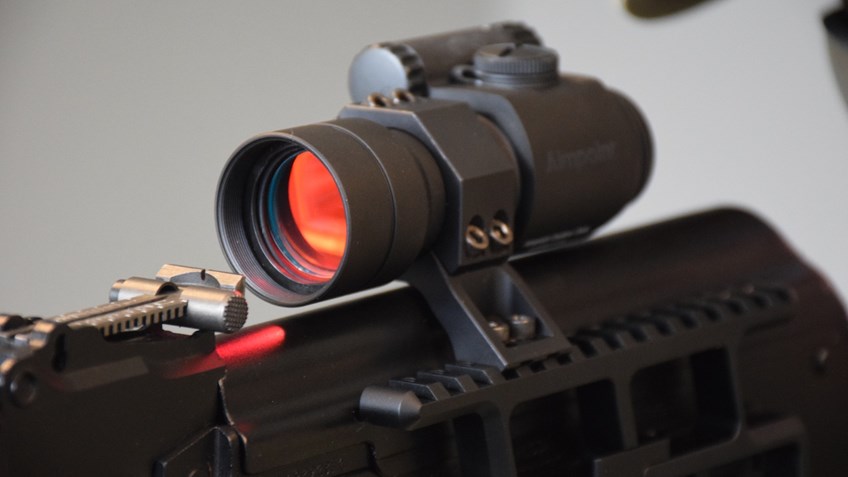Red dots 101 – An unbiased review of the pros and cons
If you are passionate about guns and have cultivated the hobby of self-defense, chances are you are familiar with the red dot sights fitted on standard-sized rifles and handguns. Red dots are the perfect sights for practicing if you are a beginner or even for a professional law enforcement serviceman. Red dots were primarily designed for close to moderate range combat and for rapid firing while mounted on semi-automatic and automatic rifles.
Red dots are generally pretty basic with respect to the tech involved, and they are very simple to use. But most people seem to get confused around the red dots. For all your doubts you can log on to https://gunsights.org/and read and review the various iterations of red dot sights available. With the advent of modern technology, a number of innovations have been made possible, and in the late 70s the red dot sight was developed, and it was a marked improvement over the traditional iron sights.
The following article lists a basic introduction into the world of red dot sights and discusses the pros and cons of this very primary sighting system. Let’s dive right in!
A basic introduction
If truth be told red dots are not a specific type of sight, but it is more of a general term. Any sighting mechanism that uses a red dot as an aiming device can be termed a red dot sight. There are many different types of electronic weapon optics that use red dots or green dots, and all of the variations come together under the moniker of red dots.
One essential thing to remember is that red dots do not offer any magnification and in that sense, these are not technically scopes that can be fitted onto sniping guns that require very high magnification.
The red dot type and workings
There are three major variations of red dot sights, and they all differ subtly from each other. The variations are as follows,
Prism sights
As the name suggests, this type of red dot sight uses a prism to focus the target as you look down the scope. The prism red dot sights are very small, and they offer a minimum magnification to the user. These do not operate using the traditional series of lenses, therefore, making the real estate requirement quite small if you are thinking of mounting on a pistol! The illuminated reticle is red and thus the name.
Reflex Sights
These are the most common and popular types of red dot sights. The exposed red dot reflex sights have one aiming point projected from the rear of the sight onto the aiming window. This iteration of the red dot is a ubiquitous sight on gun ranges and in movies. If you are thinking red dots, chances are you are visualizing this reflex sight variation of the red dot. There are tube-shaped internal reflex red dot sights as well, as opposed to the exposed red dots. These have two lenses and are bulkier. The reflex sights are widely used to semi-automatic and automatic weapons for rapid firing at close ranges.
Holographic sights
These are patented by EOTech, and in this system, a reticle is sandwiched between two glass layers. These are similar in appearance to the exposed reflex red dot sights but are better at durability, clarity, and precision.
The pros and cons of red dot sights
Like any other product you buy from the market, the red dot sights also have their advantages and disadvantages. Let’s go over them now,
The advantages
The main advantage of a red dot sight is the ease of use and versatility under conditions of extremely stressful close combat.
- The red dot sight will always come through for you, be it a beginner or a pro shooter. Just take aim and fire, it is that simple with red dot sights.
- For a price you can even go for red dots that offer some magnification but be aware these are not the standard-issue sights available for commercial use.
- You have the option to go for a battery-operated red dot or a version that does not require batteries.
- Red dots are faster to use with a rapid firing rate observed even with beginners and trainees.
- In iron sights, you would need to align both the rear and the front sight, but there are no such hassles when using a red dot sight.
- With the reflex and the holographic variations of red dot sights, you can shoot with both your eyes open and zero parallax error.
On the downside
- Red dots do not come cheap. The standard issues are quite pricey and with every advancement with prices surge up. Although some entry-level red dot sights are affordable but make sure you know what you are going for with red dots.
- Red dots differ significantly with respect to the MOA depending on the maker and the issue along with the type of sight. You need a little bit of technical knowledge while making the purchase.
- The eye relief for Prism sights is small so for the user the eye needs to be closer to the sight.
- The usual variations of red dots do not offer any magnification.
In conclusion
A look through the pros and cons for red dots tells us that the choice is an excellent one for standard-size rifles and pistols. Red dots work the best for close-quarter combat and rapid firing at low to moderate ranges. The sight can work in conjunction with iron sights, night vision optics, and secondary red dots.
Red dot sights are an extremely popular choice for competitions and sporting events as well as for the defense forces and law enforcement services. Red dots are the past, present, and the future of the gun sights and it is here to stay. If you are a gun aficionado make sure you invest in one today.

